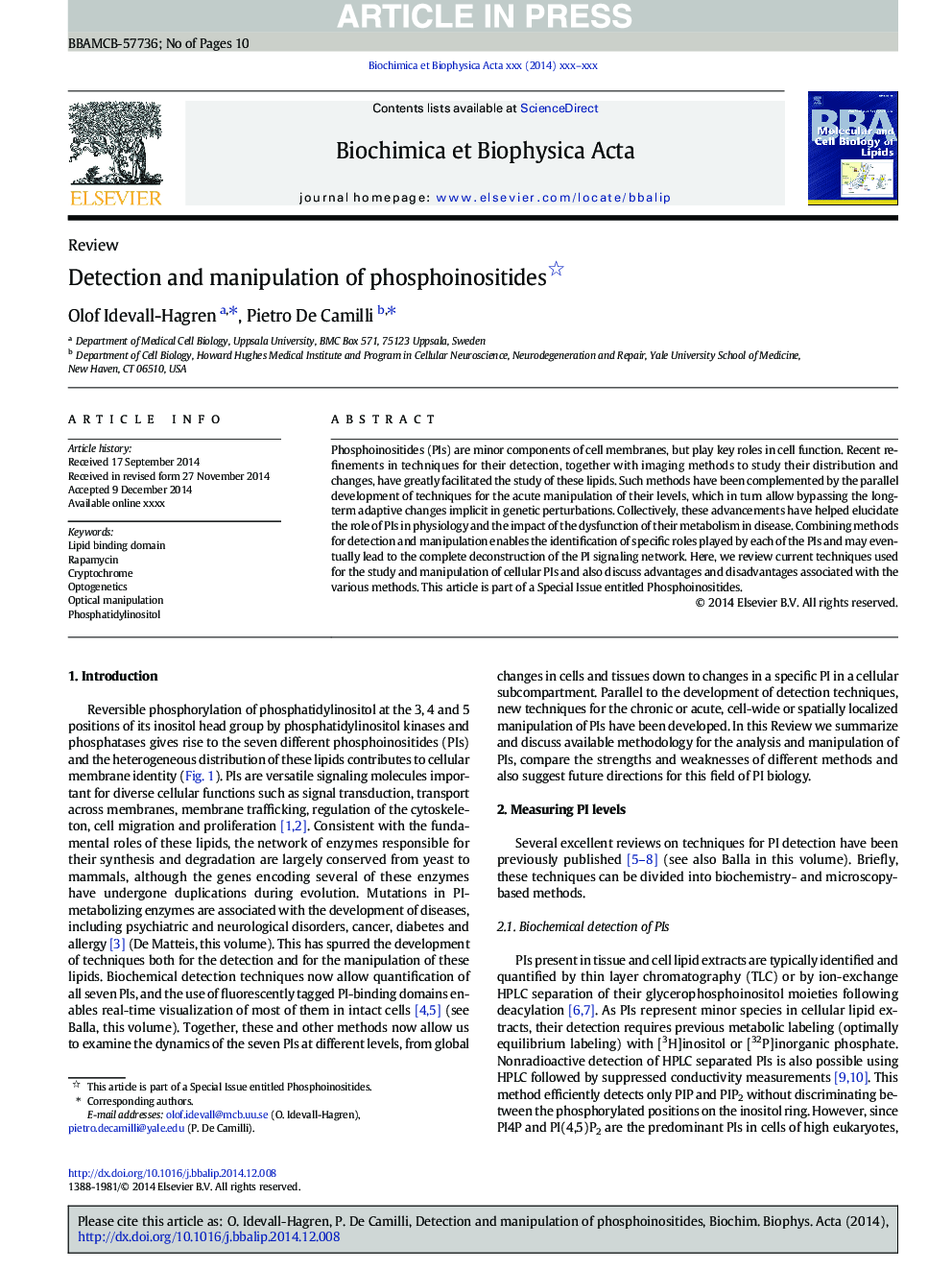| Article ID | Journal | Published Year | Pages | File Type |
|---|---|---|---|---|
| 8302001 | Biochimica et Biophysica Acta (BBA) - Molecular and Cell Biology of Lipids | 2015 | 10 Pages |
Abstract
Phosphoinositides (PIs) are minor components of cell membranes, but play key roles in cell function. Recent refinements in techniques for their detection, together with imaging methods to study their distribution and changes, have greatly facilitated the study of these lipids. Such methods have been complemented by the parallel development of techniques for the acute manipulation of their levels, which in turn allow bypassing the long-term adaptive changes implicit in genetic perturbations. Collectively, these advancements have helped elucidate the role of PIs in physiology and the impact of the dysfunction of their metabolism in disease. Combining methods for detection and manipulation enables the identification of specific roles played by each of the PIs and may eventually lead to the complete deconstruction of the PI signaling network. Here, we review current techniques used for the study and manipulation of cellular PIs and also discuss advantages and disadvantages associated with the various methods. This article is part of a Special Issue entitled Phosphoinositides.
Related Topics
Life Sciences
Biochemistry, Genetics and Molecular Biology
Biochemistry
Authors
Olof Idevall-Hagren, Pietro De Camilli,
